The Northern Triangle
Composed of El Salvador, Guatemala and Honduras, the so-called Northern Triangle of Central America (NTCA) constitutes the nucleus of the migratory conflict in the American continent. It exerts pressure on the US, but also generates serious problems for the local populations.
According to a recent report from the US Congress (April 2021), more than 2 million people have left NTCA countries since 2014. They have faced deep social, political, economic and environmental problems for decades, resulting in permanent instability.
Poverty levels in the region are very high. Recurrent droughts have been hitting Guatemala, El Salvador, Honduras and Nicaragua, destroying corn and bean crops, which constitute the basic sustenance of the Central American diet. The 2018 drought affected 2.2 million farmers who lost their crops, causing 1.4 million people to fail to reach a basic level of nutrition. That year, the so-called migrant caravans erupted, making the conflict visible on a global scale. Central American governments, with the exception of Nicaragua, have done little to offer support to uprooted farmers.
There is a rapid expansion of transnational organized crime in some of these countries, which, despite having decreased slightly in the last two years, has grown exponentially over the last decade. These countries are among the most dangerous in the world. They have an average homicide rate of 90 per 100,000 inhabitants, 5 times of what the World Health Organization considers “epidemic”. El Salvador is the country with the highest murder rate in the world, Honduras is the fifth highest and Guatemala is number 18. These figures are comparable, according to Doctors Without Borders, to those of war zones. Criminal groups (maras, drug traffickers, human traffickers) are mentioned along with other actors including political parties and state actors, traversed by corruption in a context of weak law enforcement.
The US interference has been a constant in the process during decades, acting on the basis of their interests, through different methodologies and techniques. To consider only the most prominent cases, we can mention that in the 1980s, the CIA formed death squads and Washington supported right-wing dictators to fight against socialist movements throughout the region. Honduras became a drug trafficking nest used to finance the “Contra”, the counterrevolutionary terrorists in Nicaragua, which recently (2009) suffered a Washington-backed military coup. For most migrants who leave these countries, returning is not an option.
Africa-America
Another population flow that has been growing since 2013 is the drift of African people who are crossing up to 9 Central and South American countries to reach the US border to request asylum or enter illegally. In 2019, 5,000 African migrants were apprehended trying to cross the US border “irregularly”, doubling the 2018 figures. Those migrants came from 35 different nationalities, mainly Cameroon, Democratic Republic of Congo, Eritrea, Ghana and Somalia. Together with Asian migrants, they are called “extracontinental migrants”. Most of them enter the continent through Ecuador, which allows visa-free travel for most nationalities, or Brazil. From there they begin their journey up north, going across Colombia, Panama, Costa Rica, Nicaragua, Honduras, Guatemala and Mexico.
The most dangerous stretch is the Darién Gap, a route through the jungle that stretches on both sides of the Colombia/Panama border, plagued by criminal groups amidst the absence of the state. Migration management strategies in these countries are generally limited to facilitating transit north and enforcing the law in exceptional cases (e.g. criminal records registered in international security databases).
Like all other global migrant flows, the movement of Africans across the Americas stalled in 2020 due to Covid-19-related mobility restrictions, trapping thousands of migrants along the way, but began to increase in 2021.
According to data from the International Organization for Migration (IOM), in 2019, of the 40 million African immigrants living outside their countries of origin, 53% lived in another African country, while 27% lived in Europe, 12% in Asia and 8% in North America. Most African migration occurs within the African continent.
Although African migration through the Americas is still relatively small, it is likely to continue and grow steadily. Africans accounted for less than one-sixth of all international migrants in 2020. The reasons for migrants to leave their countries of origin are varied: armed conflicts, political persecution, lack of economic opportunities, climate change and the search for family reunification. Africa’s population is growing faster than any other continent, and local and regional conflicts will continue or may deepen.
Mexico, a nodal player
The migrants that cross its borders come from all the countries of the world. In the scheme proposed and reconfirmed recently by the US, the unquestionable dominator of the situation, the objective is to bolster Mexico as a security filter. Thousands shall be detained here and deported to their countries of origin. This is already happening.
Mexico usually deports more Central Americans than the US. Between 2015 and 2019, Mexico detained more than 17,000 migrants coming from African countries, more than 25,000 from Asian countries and more than 44,000 from Caribbean countries who were traveling irregularly through its territory. In 2019, López Obrador (AMLO) agreed with Trump on the development of the “Stay in Mexico” program, which forces migrants to wait in Mexico during their asylum procedures that forced migrants to wait there while their US application cases were processed.
The migrant or refugee camp scheme has grown. One of those new camps is Plaza de la República. It began to be formed in March 2021 bringing together more than 2,000 people, living outdoors, mostly from Honduras, El Salvador and Guatemala. They live in deplorable conditions after being expelled from the US on account of Title 42, a policy implemented by Trump: taking the emergency of Covid-19 as an excuse, it allows undocumented migrants to be expelled automatically.
A growing hot spot is in the city of Tapachula (in the southern Mexican state of Chiapas). There, some 40,000 people from different countries are trapped after having crossed the border from Guatemala and being stopped by state officials or having been deported by the US and transferred south by Mexican authorities. A significant part of them are women and children. All of them have been waiting for months for the resolution of their immigration status. Meanwhile more people keep coming. Between January and August 2021 this region registered a historical migratory flow, with 147,000 undocumented persons detected, tripling the figures of 2020.
After the high-level meeting with López Obrador, Anthony Blinken said, at the joint press availability shared with Mexican Foreign Secretary Marcelo Ebrard: “We also are trying to be very clear that if they seek to make that journey in an irregular manner, they put themselves at tremendous risk along the entire route, and they will not be able to enter the United States.” The message is compelling.
Meanwhile, asserting that the government will continue to “contain” the flows of people, Mexico is also asking Washington to enable visas, scholarships, asylum, resources and investment for countries that are willing to permanently receive these migrants, other than making detentions.
The problem is far from over. Even more so when everything seems to depend on Biden’s plan, which stipulates a 4-billion-dollar, four year investment program, presumably, for the development of Central America to tackle the root causes of irregular migration. This aid will be channeled to civil society organizations, as announced by US authorities, which heralds the continuity of interventionism.
A few days ago, officials of the Mexican National Institute of Migration detained more than 800 undocumented Central American migrants (Hondurans, Salvadorans, Guatemalans, mainly) in the state of Tamaulipas (northwest, bordering the US), who were traveling in six refrigerated containers. It is perhaps the operation that has rescued the largest number of migrants from illegal trafficking networks in recent times. The human tide doesn’t stop.
Trump-Biden
Migration is a structural problem for the US. According to the Census Bureau, 45 million people in the country are immigrants (14% of the total population). Of those, 25% come from Mexico. However, Asia is the top region of origin, with 28% of immigrants born there. The undocumented population is estimated at 11 million and has been increasing since 2008. The Customs and Border Protection (CBP) reported that more than 212,000 people were detected trying to cross the border in July 2021, the highest number in two decades.
Trump sought to reduce both legal and illegal migration with different policies. Among them, expanding the wall on the border with Mexico, declaring a national emergency to get the necessary funds, implementing a zero-tolerance policy (authorities could detain and prosecute any person found crossing the southern border without authorization).
Although Biden took dozens of measures to differentiate himself or reverse Trump policies (reducing immigration enforcement inside the US, ending the travel bans, lifting the suspension of green card, halting construction of the wall, lenient policies towards children), he faces an accelerated growth in migratory flows. Migrants continue to cross the border alleging persecution or fear of persecution in their countries of origin, requesting asylum, or evading immigration inspectors and border patrols by entering the country trying not to be detected. According to the Pew Research Center, at least 40% of unauthorized migrants entered the country legally on transitory visas and remained illegally. Washington is determined to stop them.
Today, the US’ position on migrants finds continuity with that of the Trump administration. Marsha Espinosa, spokesperson for the Department of Homeland Security (DHS), after the Rio Seco crisis broke out, declared: “We have reiterated that our borders are not open.” Since Biden took office in January, more than 1.3 million migrants have been detained. This is the highest number of arrests in the last 20 years. The Biden administration has already begun the deportation of the nearly 15,000 people who recently managed to cross the border. On Biden’s first day in office, DHS suspended the “Stay in Mexico” policy. However, in late August a Supreme Court ruling ordered that it be reactivated, after confirming a previous court ruling. The regulation put in place at the beginning of the pandemic by Trump, which allows the immediate expulsion of migrants without giving them the opportunity to request asylum, is still in force. Biden halted the construction of the wall and declared the end of the national emergency on the southern border. However, one must remember that the wall was started by the Democrats themselves (Bill Clinton, 1990s). In times to come, will they continue to build the wall? Will they implement new control systems?
Haitian migration
We have all seen the recent news coverage of US Border Patrol agents on horseback chasing asylum seekers from Haiti who attempted to enter the US. This made it clearly visible that approximately 13,000 migrants had been encamped underneath the bridge that connects the city of Del Rio in Texas with Ciudad Acuña in Mexico, most of those detained there are Haitians. Presumably, very few have been able to bypass the controls and enter the country undetected.
Haitians’ motivations to migrate range from the instability generated after the assassination of President Jovenel Moïse, growing insecurity, poverty, political instability, all catalyzed by the consequences of the 2010 earthquake that left large parts of the nation in ruins and claimed the lives of more than 200,000 people.
A very significant part of the Haitians who arrived in Ciudad Acuña come from Brazil, where they were attracted in 2014 by the promise of jobs on the construction site for that year’s soccer world cup and 2016 Summer Olympics. But when those jobs dried up, many migrated to other countries in the region. Many went to Chile where there were also opportunities for construction work, while visas were not required. Soon, however, migration policies became more repressive at an accelerated pace, and many lost their opportunities or had to leave the country. Social tensions also began to rise, as was seen recently in the “No more migrants” demonstration in the city of Iquique, in the north of the country, where some 5,000 people, encouraged by political parties and government officials, expressed their rejection to the migratory wave. A group of protesters attacked a migrant camp and burned their belongings. An estimated 3,000 people are stranded in the country, waiting to leave north after entering Chile through unauthorized border crossings. As of December, there were more than 182,000 Haitians living in Chile, according to government figures. That does not include undocumented migrants. There, too, tension is on the rise.
The US government has closed the border to prevent the entry of more groups and has insisted that migrants arriving illegally will be returned to their countries of origin. On September 20, National Security Secretary Alejandro Mayorkas sent a message to migrants, particularly Haitians: “People coming to the United States illegally will be returned, your journey will not succeed, and you will be endangering your life and your family’s life.” Biden already used Title 42 as a justification for expelling nearly 4,000 Haitian migrants, denying the asylum claim. The dire consequences of decades of imperial predation and interference in the region continues. Nothing new under the sun, whose rays will continue to burn harshly on the southern border of the Land of Dreams.







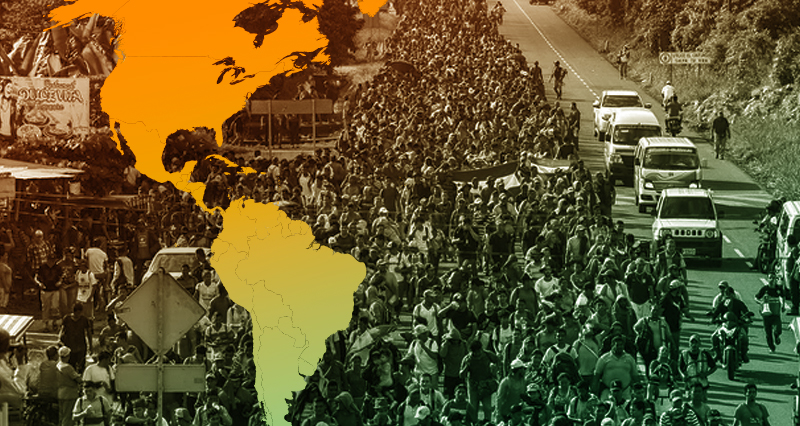

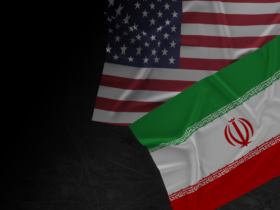
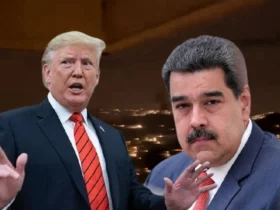
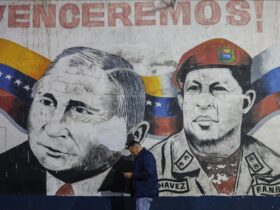
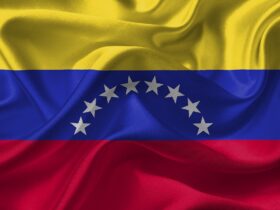

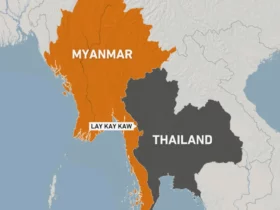


Leave a Reply